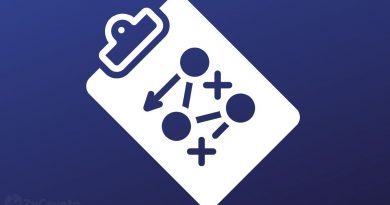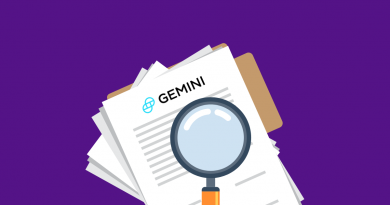An Interview with DeepBrain Chain’s Founding Member, Yong He, On the Project’s Commercialization, Revenue, Mainnet Public Test Phase II and Supernodes Election
DeepBrain Chain (DBC) is a project established at the end of 2017, seeking to build the world’s largest distributed high-performance computing network through blockchain technology. After four years of hard work, DBC is now the first to be commercialized in the field of decentralized computing. In the past six months, its price has rose nearly 30 times.
According to DBC’s product roadmap, it launched public test phase I in March this year, and has attracted the participation of community members from more than ten countries, including China, the United States, Russia and Singapore, in addition to more than 20 FileCoin brand vendors actively participating in the supernodes election. It is worth noting that the total number of DBCs issued is 10 billion, of which mining generates 40%, and DBCs will use deflationary means to ensure the interests of miners. This month, DBC will enter the mainnet public test phase II as well as the computing node reward smart contract testing phase I.
“DeepBrain Chain has access to more than 5,000 GPUs on its network, that makes us the leader in decentralized computing (GPU as the main resource),” said Yong He, founder of DeepBrain Chain, in an interview with 8BTCNews, “Nvidia’s market value has far surpassed Intel’s, and cloud computing will definitely shift from CPU to GPU.”
The following is the interview with Yong He:
8BTCNews: What is the reason for adding an additional 20.21 million DBCs to the node rewards of DeepBrain Chain in the mainnet public test phase I? Will the temporary increase of 20.21 million DBCs lead to inflation? Has this move brought the effect you expected so far?
Yong He: It will not lead to inflation. The 20.21 million DBCs come from the team, and our team has 100 million DBCs per year, which is unlocked throughout 10 years. This year our team has 100 million, from which we take out the 20.21 million so this does not lead to a change in the total amount. This part is allocated to miners involved in the public testing phase by the node. Adding this to the original monthly block-producing reward of 8.33 million DBC, it is a total of 28.54 million DBC for 51 nodes, which equates to more than 500,000 DBCs per node. The reason for doing this is to encourage more people to participate in the mainnet public test phase I, giving more benefits to early participants. The expected results have been achieved so far.
8BTCNews: What is the difference between DeepBrain Chain’s miners’ income composition and other projects specifically?
Yong He: DeepBrain Chain has mining revenue and rental revenue, while other projects only have mining revenue. In addition, every time a user rents GPU on our network after the mainnet is launched will lead to corresponding DBC token burn.
I will give a simple example, if an artificial intelligence enterprise customer, need 200 GPU to do training and they rent them from us, they will need to pay with DBC. One GPU’s monthly rental fee is 1,500 RMB, 200 GPUs a month costs 300,000 RMB. For this 300,000 RMB the user first have to go to the market to buy 300,000 RMB worth of DBC, and then use these DBC for the payment. 15% of the rental fee received by the miner will be burnt, that is, the equivalent of 45,000 RMB worth of DBCs will be destroyed. This way, DBC will go into deflation, so the value of DBC is supported and increased.
8BTCNews: Tell us how you feel about DBC’s ecosystem and the public testing process.
Yong He: Everything is moving forward according to the product roadmap, the DBC mainnet public test phase 1 has been operating steadily for nearly a month now and has ended on April 16th. The threshold for DBC mainnet public test phase II is 5 million DBC, and a total of 21 elected supernodes, each node can get 396,000 DBC as reward.
The public test and supernode election attracted community members from more than ten countries, including China, the United States, Russia, Germany, Ireland, Serbia and Singapore, and more than 20 FileCoin brand vendors actively participated in the campaign for the DBC mainnet public test and supernodes election. There are some community members who have been supporting the DeepBrain Chain project for four years and actively contributing to the project. For example, the campaign of “DeepBrain Chain (DBC) NFT commemorative coins” is proposed and realized by community members in an effort to further strengthen the community spirit.
All community members can e-mail [email protected] to apply for receiving testnet DBC tokens to participate in the supernode voting, and get rewards. The number of testnet DBCs received by the applicant is the same as the number of DBC in their validated wallet(s); the testnet DBCs can then be used to participate in the mainnet public test phase 2 election, and can also be used to support other validator nodes. The mainnet public test phase 2 supernode election verification ends at 23:59 BST on April 11th; the supernode election starts at 00:00 BST on April 15th.
8BTCNews: According to the different public test phases, DeepBrain Chain has 51 nodes and 21 nodes respectively, what is the difference between the two phases and the number of supernodes? A lot of people say that the reason EOS failed is because of supernodes, why does DBC still take the same action?
Yong He: There are 51 nodes in the public test phase one, which is considered to allow early participants to become supernodes and get the reward. Public test phase two has 21 nodes, which is to simulate the election process of the mainnet. The official launch of the mainnet is also 21 supernodes, and 10 nodes will be added every quarter after that.
EOS’s failure has nothing to do with the supernodes, and Polka also elects supernodes. The most important factor for a project to be successful is whether it can be commercially implemented on large scale. The operation model of DeepBrain Chain is similar to Filecoin, Filecoin is distributed storage, DeepBrain Chain is distributed highㄦperformance computing. Filecoin’s storage miners need to pledge a lot of tokens to ensure the stability of storage, and DeepBrain Chain’s GPU machine miners also need to pledge a lot of tokens to ensure the stability of GPU server.
In addition, the mainnet of DeepBrain Chain is a supernode DPOS consensus, which also requires nodes to pledge a large amount of tokens. Every 24 hours an election will take place, the nodes pledge their own tokens and supporters also pledged tokens, the ones ranked in the top 21 can get the right to produce the block in the next 24 hours.
As a large number of tokens are pledged on DeepBrain Chain’s mainnet, users rent DeepBrain Chain’s GPU server, and each DBC used to pay rental fee will be burnt, the burning ratio is equivalent to 15%. The more users there are, the more DBCs will be destroyed. Overall DBCs should go into deflation.
8BTCNews: What is the impact of the NFT commemorative coin campaign?
Yong He: We are mainly giving away these coins to people who can contribute to the community, this campaign will last until 2026. People who meet the conditions can apply for the coins by e-mailing us, we are seeing really positive reactions so far, especially in the Chinese community, but we have certain screening thresholds. The NFT commemorative coins that we will launch on the mainnet are: gold coins, silver coins and bronze coins, corresponding to a mintage of 10, 100 and 1,000 coins respectively, which will never be issued in increments, and we will guarantee the buyback.
The rights and benefits enjoyed by commemorative coin holders include:
- The Foundation opens a buyback once a year in January, in which gold coins can be exchanged for 1 million DBC, silver coins for 100,000 DBC, and bronze coins for 10,000 DBC; the buyback deadline is December 31, 2026.
- Commemorative coin holders can participate in community governance work on a priority basis.
GPU Will Be the Main Thing In Cloud Computing In The Future
8BTCNews: DeepBrain Chain focuses on GPU computing sharing, what is the impact of today’s GPU price surge on the project itself?
Yong He: First, the high-end GPU chips are basically monopolized by Nvidia and AMD, so there is not enough competition in the market and the prices are high; second, the two chip foundries are mainly TSMC and Samsung, which have limited capacity. Third, the ETH price spikes resulted in many GPU being used in mining, hence many related businesses such as cloud gaming, autonomous driving, biopharmaceuticals, artificial intelligence, etc. are all affected.
From the current point of view, for quite a long time, graphic cards will be in short supply, with limited capacity; for miners, where the revenue is high, they will go.
GPU prices have skyrocketed, and it’s hard for our customers to buy them, so there’s more demand for rental GPUs. And the customers of artificial intelligence and cloud gaming, according to their purchasing volume, it is hard for a single enterprise to purchase thousands of GPUs by themselves at once, and the cost is very high when the purchasing volume is small, so the DBC miners can jointly purchase them, which can reduce the cost.
In addition, whether our network can attract more GPU resources to join in or not depends on the miners’ revenue. After our mainnet is online, DBC miners will have two returns, one is mining revenue and the other is GPU computing rental revenue. The overall revenue of DBC miners will be higher than ETH mining revenue for a long period of time when mining is on; and there is computing rental revenue guaranteed during bear market, which can hedge the risk well, so there is no ‘’shutdown price’’ meaning the price of renting out GPU won’t go so low that the owners rather shutdown the machine. In addition, in our network, machines that stay online at all times can get bonuses, and power consumption is actually very low when no one is using them.
8BTCNews: There are FileCoin, THETA, and Dfinity in the blockchain cloud computing space, what does DeepBrain Chain think is its winning formula?
Yong He: We are not in competition with these three, we belong to different fields in cloud computing. The traditional cloud computing field troika is computing, storage and network CDN, among which computing is the one that uses the most cloud computing, and the trend is to shift from CPU computing to high-performance GPU computing. So Ali cloud is called Ali cloud computing, and AWS is also called Amazon cloud computing. In the blockchain world, each part of the troika corresponds to a blockchain project. Filecoin is decentralized storage, THETA is decentralized network CDN, Dfinity is decentralized CPU computing, and DeepBrain Chain is decentralized GPU computing.
In traditional cloud computing, CPU to GPU transfer is the mainstream trend now. Intel is the CPU market king, while GPU leading representative Nvidia’s market value in last year for the first time far exceeded Intel. I myself came from an artificial intelligence background, like autonomous driving, artificial intelligence, even including the video image processing technology behind Jitterbug, etc., relying on GPU, and now traditional cloud computing vendors say the incremental market is dominated by GPU.
In the field of decentralized GPU computing, DeepBrain Chain is now in the global leading position and has already achieved large-scale landing. DeepBrain Chain has started commercialization for more than 1 year, and the revenue of GPU rental last month was nearly 10 million, and the growth rate was about 20%, and these customers mainly come from artificial intelligence, cloud gaming field and the demand for zero-knowledge proof computing in blockchain field.
8BTCNews: Last year, on DeepBrain Chain’s official Twitter you said there were problems in the procurement of hardware which led to the business not being able to carry out normally, can you talk to us about this episode?
Yong He: The official account was hacked, and the Foundation clarified it in the official Twitter at that time, and individual historical problems were solved before October last year. At present, the business is progressing very smoothly, and the high-performance computing power of DeepBrain Chain network is widely used in various scenarios such as blockchain, artificial intelligence, cloud games, visual rendering, biopharmaceuticals, semiconductor simulation, etc. At present, more than 5,000 GPUs are online, providing well-priced GPU computing power for many enterprises, and nearly 50 manufacturers worldwide have deployed high-performance GPU cloud platforms based on DeepBrain Chain’s network, serving hundreds of enterprises and tens of thousands of AI developers.
Transferring From NEO To Polka, DBC Will Be Combined With Polka Defi Project
8BTCNews: DeepBrain Chain was originally a project based on the NEO contract, and also received strategic investment from NEO. When did DeepBrain Chain choose to move to Polka? Why did you choose Polka?
Yong He: The mainnet of DeepBrain Chain was developed in 2019 based on the substrate of Polka, and the testnet phase one is already running well. This process does not conflict with NEO.
The reason for choosing Polka is that Polka supports us to do the underlying development and we can do our own chain. Our original business on NEO is supported by smart contracts, and many complex functions are difficult to implement. In addition, Polka’s governance mechanism is better and has a huge ecosystem, which has integration points with our business.
8BTCNews: Will you be involved in the bidding of slots for Polka?
Yong He: Not at the moment, we have our own super nodes, so it’s hard to say if we will participate in the future. The slot auction is essentially to maintain the stability and security of the chain through slots, so we will not participate in it for a certain period of time, and it will not affect our business at this stage.
8BTCNews: The mainnet of DeepBrain Chain will be based on the Polka ecosystem, and will be connected to DeFi in it, and will be online in the future for the Polka ecosystem’s decentralized exchange. Any more specific plans? How does DeepBrain Chain, which focuses on high-performance computing, plan to combine with DeFi?
Yong He: At present, we are observing the formal operation of the decentralized exchange in the Polka ecosystem, and once there is a decentralized exchange running safely and stably, we will access it. DeepBrain Chain does not combine with Defi in the computing power itself, but users of DeepBrain Chain’s computing power need to use DBC in order to rent GPU computing power, if users do not have DBC, they can go to the relevant Defi project to pledge assets to borrow DBC
Source: Read Full Article




